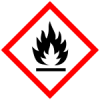The Producer has a plan to phase out by 2024 pesticides listed in category 2 of the Globally Harmonized System of Classification and Labelling of…
Coalition status
BCI Phase out by 2024Fairtrade Red
Bonsucro Banned
Chemicals that are banned by the Bonsucro…
This list contains 207 pesticides. The list is valid as of January 2018.
Prohibited pesticides that must not be used on Fairtrade products under any…
FSC highly restricted HHPsChemical pesticide presenting two or three out of the following hazards: acute toxicity, chronic toxicity and environmental toxicity.
GCP ProhibitedPesticides in the Prohibited List are not used.
This includes pesticides that are:
Listed under the Stockholm Convention, Rotterdam Convention or…
Rainforest Exception, Rainforest prohibited PesticidesRSB BanNone of the chemicals recorded in the WHO’s 1a and 1b lists shall be used. The use of chemicals recorded in Annex III of the Rotterdam Convention, in…
SAN HHP: phase-out, SAN ExceptionThe SAN List of Highly Hazardous Pesticides consists of 230 pesticides:
SAN HHP Pesticides are classified as Highly Hazardous Pesticides according to…, Within its 2018 Sustainable Agriculture Framework and related projects, SAN promotes the elimination or phase-out of SAN HHPs without any general…
UEBT ProhibitedThe use of Prohibited Agrochemicals is prohibited for certified, prioritised and verified ingredients, because they are considered Highly Hazardous…
UTZ ProhibitedA pesticide all uses of which have been prohibited by final regulatory action, in order to protect human health or the environment.
Details
Type: Pesticide
Use: Rodenticide
Example applications: Agricultural crops;Vegetables;Ornamentals;Orchards;Crop storage.
Example pests controlled: Rats - Norway and roof;Mice;Pocket gophers;Meadow voles
Mode of action: Toxicity caused by the production of phosphine under acid conditions in the rodents stomach. Phosphine, a nerve toxin, has respiratory action, mitochondrial complex IV electron transport inhibitor
Source: PPDB
Toxicty
Bird toxicity
Highly toxic to birds acute oral LD50 (LD50 < 200mg/bg bw)
Highly toxic to birds acute oral LD50 (LD50 < 200mg/bg bw)
Highly hazardous (Class WHO Ib)
WHO class I – b: highly hazardous
Mammal toxicity
Acute oral LD50 for most sensitive mammal species (LD50 < 200mg/kg bw).
GHS safety labels
About Globally Harmonized System of Classification and Labelling of Chemicals (GHS)
From Wikipedia: The Globally Harmonized System of Classification and Labelling of Chemicals (GHS) is an internationally agreed-upon standard managed by the United Nations that was set up to replace the assortment of hazardous material classification and labelling schemes previously used around the world. Core elements of the GHS include standardized hazard testing criteria, universal warning pictograms, and harmonized safety data sheets which provide users of dangerous goods with a host of information. The system acts as a complement to the UN Numbered system of regulated hazardous material transport. Implementation is managed through the UN Secretariat. Although adoption has taken time, as of 2017, the system has been enacted to significant extents in most major countries of the world.[1] This includes the European Union, which has implemented the United Nations' GHS into EU law as the CLP Regulation, and United States Occupational Safety and Health Administration standards.
- H260

In contact with water releases flammable gases which may ignite spontaneously
Class: In contact with water, emit flammable gas - H300

Fatal if swallowed
Class: Acute Toxicity
Subclass: Oral - H400

Very toxic to aquatic life
Class: Aquatic
Subclass: Acute - H410

Very toxic to aquatic life with long lasting effects
Class: Aquatic
Subclass: Chronic
